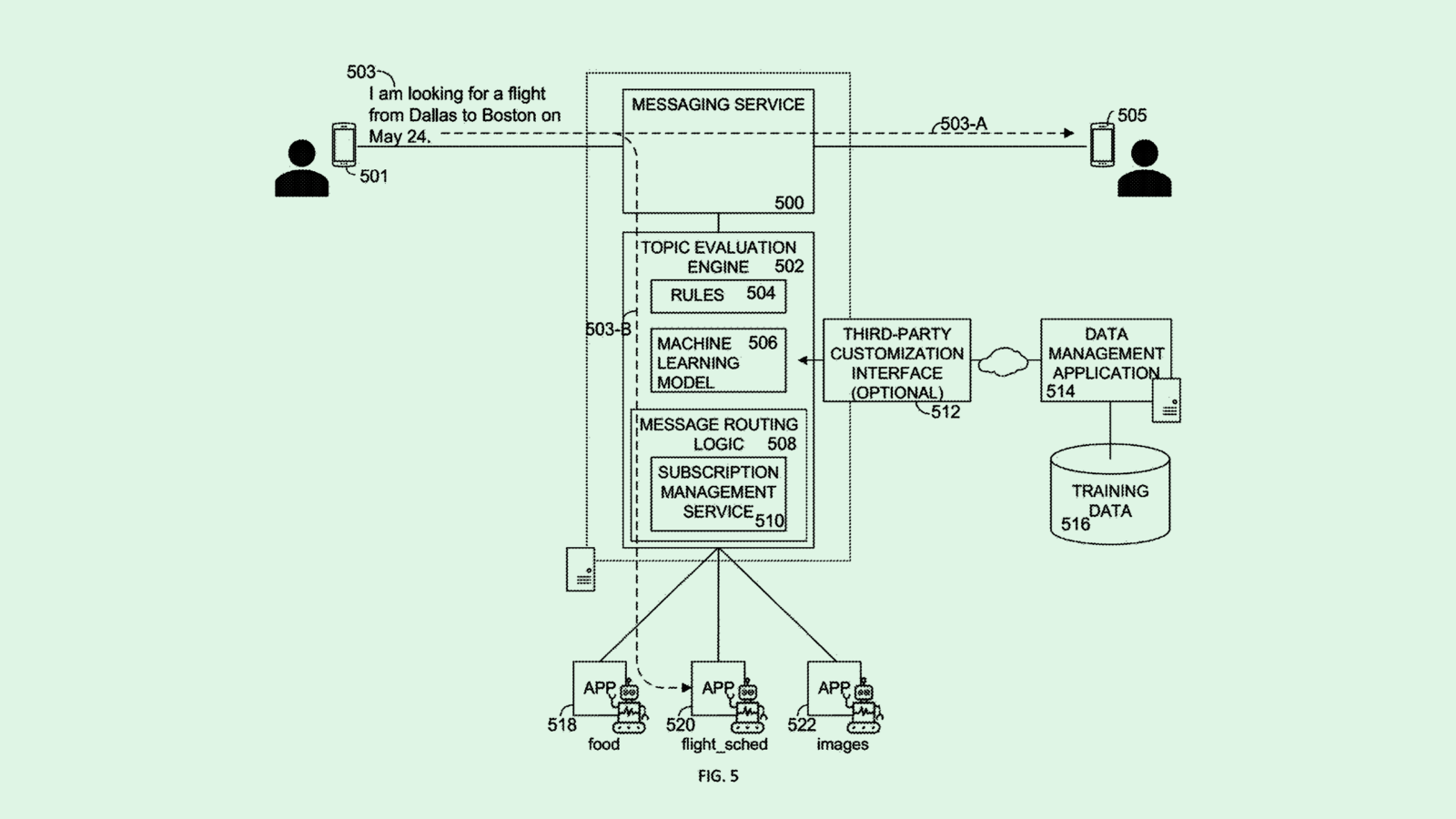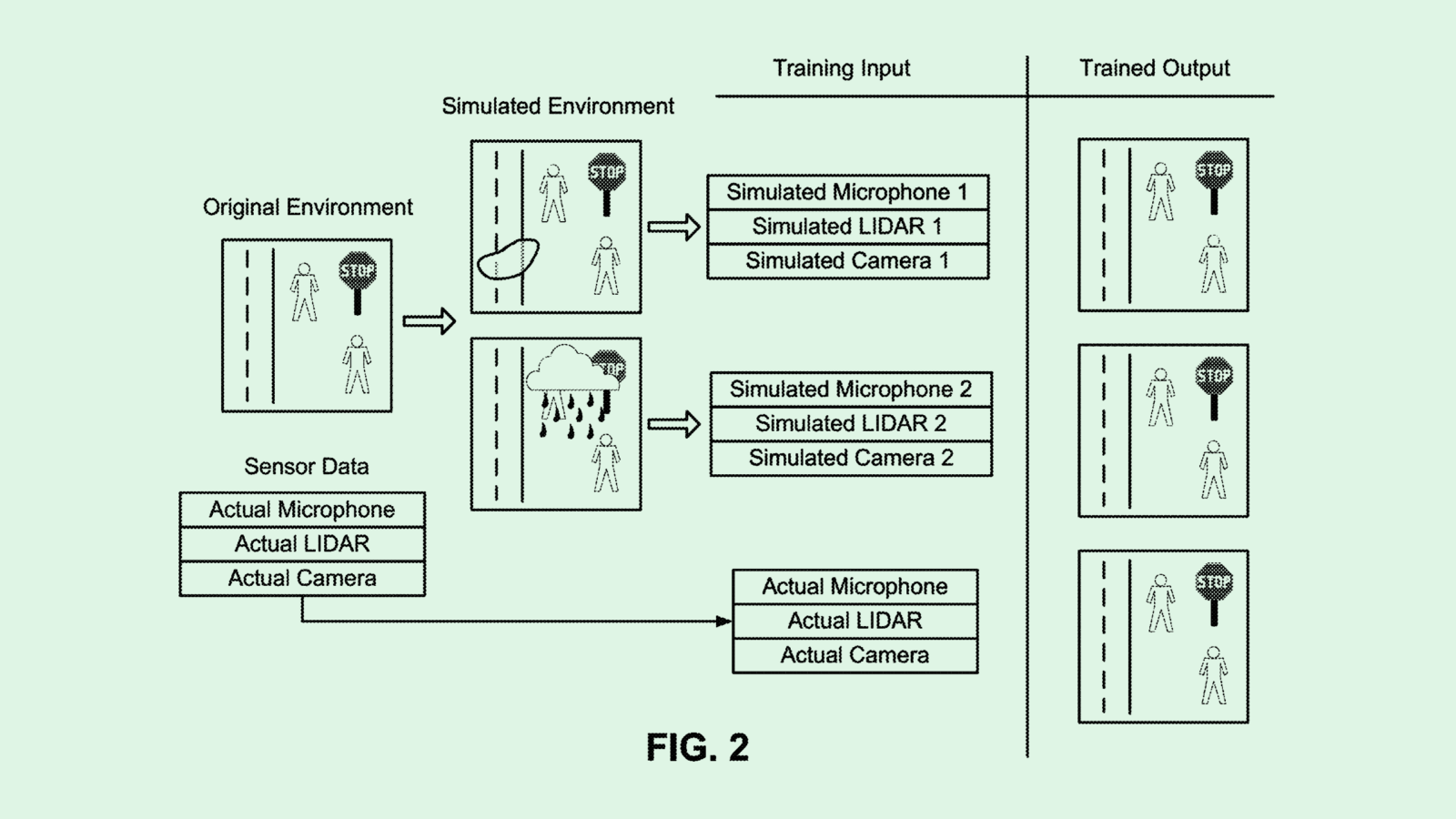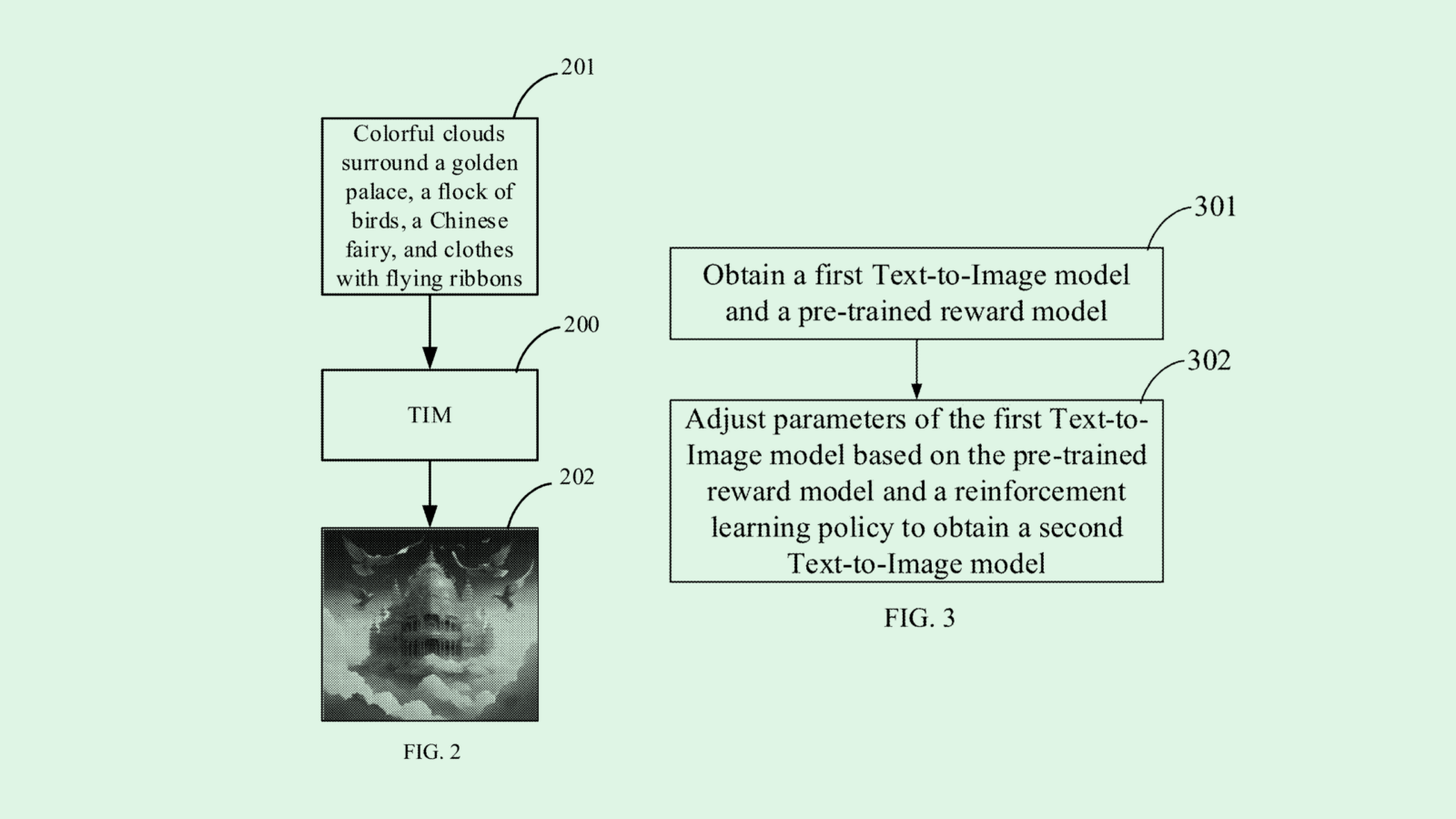Happy Monday and welcome to Patent Drop!
Today, a patent from Microsoft that aims to make AI model integration more personalized and seamless highlights the bumpy road it may face with Copilot adoption. Plus: Tesla wants its self-driving vehicles to be more prepared, and Baidu is sending its AI to art school.
Let’s dive in.
Microsoft Lends a Hand
Microsoft wants to help you with grunt work.
The company filed a patent application for a “topic evaluation engine for a messaging service.” Microsoft’s tech aims to help AI models better understand a user’s context in digital assistant applications so they can better route tasks to proper applications.
Without proper integration and understanding of user context, chatbot assistants lack “the ability of an app to naturally detect conversational intent and seamlessly provide value in context without user initiation,” Microsoft noted.
When a message first comes in, Microsoft’s system uses a machine learning model to identify its topic and intent. It also analyzes it for several “message characteristics,” including things like links, “media items” such as emojis, and mentions and tags of co-workers.
Once a message has gone through that analysis, Microsoft’s tech routes the request to the proper applications, based on whether or not that application was “previously subscribed” to receive messages from the messaging service. “The integrated applications can then process the message and provide enhanced functionality,” Microsoft said.
These “add-on applications” can be configured to meet the user’s individual needs. For example, if you send a message to this chatbot indicating that you need a flight for a specific date, it may automatically route that request to your preferred airline’s app.

A patent like this is a no-brainer for Microsoft. One of the tech firm’s biggest focuses, both in its AI development and generally, is productivity. Gaining IP on any tech that can make integrations more seamless and efficient for the end user stands to benefit the company’s vision.
Its commitment to the productivity sector shows in its earnings report last week: Though weak guidance left the company’s stock slumping, its productivity and business processes unit saw sales of $28.3 billion for the quarter, up 12% year-over-year.
The biggest advantage that Microsoft has in this market is that its tools are all built into a seamless ecosystem, said Thomas Randall, advisory director at Info-Tech Research Group. The fact that its Office suite comes together as a bundle makes it harder for “best-of-breed, specialized tools” to perform well in the market, said Randall — though the company has run into antitrust trouble for this bundling in the EU.
“The advantage Microsoft always tends to have is that they are good enough,” said Randall. “That’s been the case for a range of different apps, because they come together in a whole package and ecosystem.”
Microsoft hasn’t released firm data on how many users it’s managed to garner for its AI companion Copilot since its launch. However, the value of these bundles may be part of the reason that Copilot isn’t getting “the adoption that Microsoft wants,” said Randall.
Copilot is a tool sold separately from the rest of the company’s Office suite, and because of the steep cost, “a lot of organizations are still trying to work out what is the ROI for leveraging Copilot,” said Randall.
“I think at some point there will be a dramatic competitive advantage … There are a lot of opportunities, they need to just convince organizations to invest,” said Randall.
Tesla’s Synthetic Training
Tesla may be looking at ways to bolster its self-driving cars.
The automaker filed a patent application for “data synthesis for autonomous control systems.” Tesla’s tech aims to use synthetic data to provide more thorough training for its autonomous driving AI models.
“Typically, the performance of computer models improves with the amount of data available for learning,” Tesla said in the filing. “However, gathering data for training computer models is often costly and time-consuming.”
Tesla’s patent pitches two methods of creating synthetic data. First, the system can modify authentic sensor data collected in real-world simulations, such as altering road conditions, adding objects to a scene, or changing lighting. Additionally, it can generate this synthetic data from the ground up through simulating a “virtual environment.”
This data can be used for a number of purposes, including simulating scenarios that are rare in real-world environments, training for when some sensors are occluded or broken, or just simply expanding datasets for more robust training.

Synthetic data isn’t a new concept in AI training, with patents from Nvidia, Meta, IBM, and others highlighting other use cases for this method. But a patent like this makes sense from Tesla, since its high-flying ambitions for autonomous driving will likely require a whole lot of training data to ensure reliability.
Autonomy has been a part of Tesla’s vision for a long time, with its recent focus on robotaxis doubling down on the market. Given that the automaker is one of the only with a “tightly controlled vertically integrated offering,” and because of its “control over software, hardware, and data, we anticipate Tesla’s autonomy progress to emerge in multiple directions, including both AV technology and robotaxis,” said Tejas Dessai, research analyst at Global X ETFs.
“Moreover, this also allows Tesla to innovate in other forms of robotic technology, such as humanoids and industrial robots,” said Dessai.
Though Tesla has a number of advantages in the space, it also faces fierce competition. Tons of other tech firms and automakers are working on making their own self-driving cars. General Motors-owned Cruise started testing its self-driving vehicles in California September, and Ford CEO Jim Farley said this summer that the company’s nearing Level 3 autonomy in testing.
Google-owned Waymo, whose taxis are operational in four cities, reached a valuation of over $45 billion last week after its $5.6 billion funding round, according to Bloomberg. “We anticipate particularly stiff competition from Waymo, which has significantly more fully autonomous testing and has run successful robotaxi deployment in major cities, at scale,” said Dessai.
Baidu’s Art Class
Baidu wants to make its AI models better artists.
The Chinese tech firm filed a patent application for “training [a] text-to-image model” using reinforcement learning to iteratively improve its quality and relevance.
Baidu’s system starts with two initial models: a text-to-image model, and a “pre-trained reward model.” The reward model is designed to evaluate the quality of the photo generated by the text-to-image model based on its accuracy and relevance to the original prompt.
Each input-image pair is assigned a “score,” which serves as the reward to improve the model’s training. This reinforcement learning method takes place iteratively, improving the scores more and more each time until the images generated satisfy a “a preset condition,” likely a threshold score that indicates the model is performing up to par, Baidu said.
“Making the image output by the model aligning with the semantics and details of the input text and having as high artistry as possible is a research direction that many people pay attention to,” Baidu said in the filing.

Reinforcement learning as a means of improving AI isn’t a new concept: We’ve seen it in patents from Google DeepMind, Microsoft, and even Walmart. But as Baidu continues to compete in an increasingly crowded AI market, it makes sense it will go after as much AI IP as possible.
The search giant’s AI models have largely seen success, dominating the Chinese market. In June, it launched Ernie 4.0 Turbo (an upgraded version of its Ernie 4, which it claimed rivaled OpenAI’s GPT-4). Baidu CTO Haifeng Wang said at the time that the company’s Ernie Bot chatbot reached 300 million users.
However, turning that popularity into revenue hasn’t been an easy task. Like other major tech firms, the company is still largely reliant on digital advertising as its main sales driver. And while its Ernie Bot AI model has given way to cloud services sales, the company’s AI price war with the likes of Alibaba and ByteDance is making revenue prospects difficult.
“Where the revenues might come in, I think, is in partnerships and potentially acquisitions,” said Thomas Randall, advisory director at Info-Tech Research Group. “If they’re not working with other companies, I think they might limit themselves. It’s the quickest way to start … trying to apply [their technology] in a range of different applications.”
Extra Drops
- Apple wants to know when someone’s trying to talk to you. The company is seeking to patent a system for “headphone conversation” detection.
- Google wants to make smart glasses an audiovisual experience. The tech giant wants to patent “earbuds coupled to smart glasses.”
- IBM wants to give you a digital white picket fence. The company filed a patent application for “defining borders and neighbors in a metaverse.”
What Else is New?
- Google Cloud outpaced rivals in growth in the third quarter, with sales up 35% year over year.
- Buy now, pay later company Affirm launched its services in the UK in its first overseas expansion.
- AI search engine Perplexity announced a dedicated hub for election information for thing such as voting requirements and poll times.
Patent Drop is written by Nat Rubio-Licht. You can find them on Twitter @natrubio__.
Patent Drop is a publication of The Daily Upside. For any questions or comments, feel free to contact us at patentdrop@thedailyupside.com.
